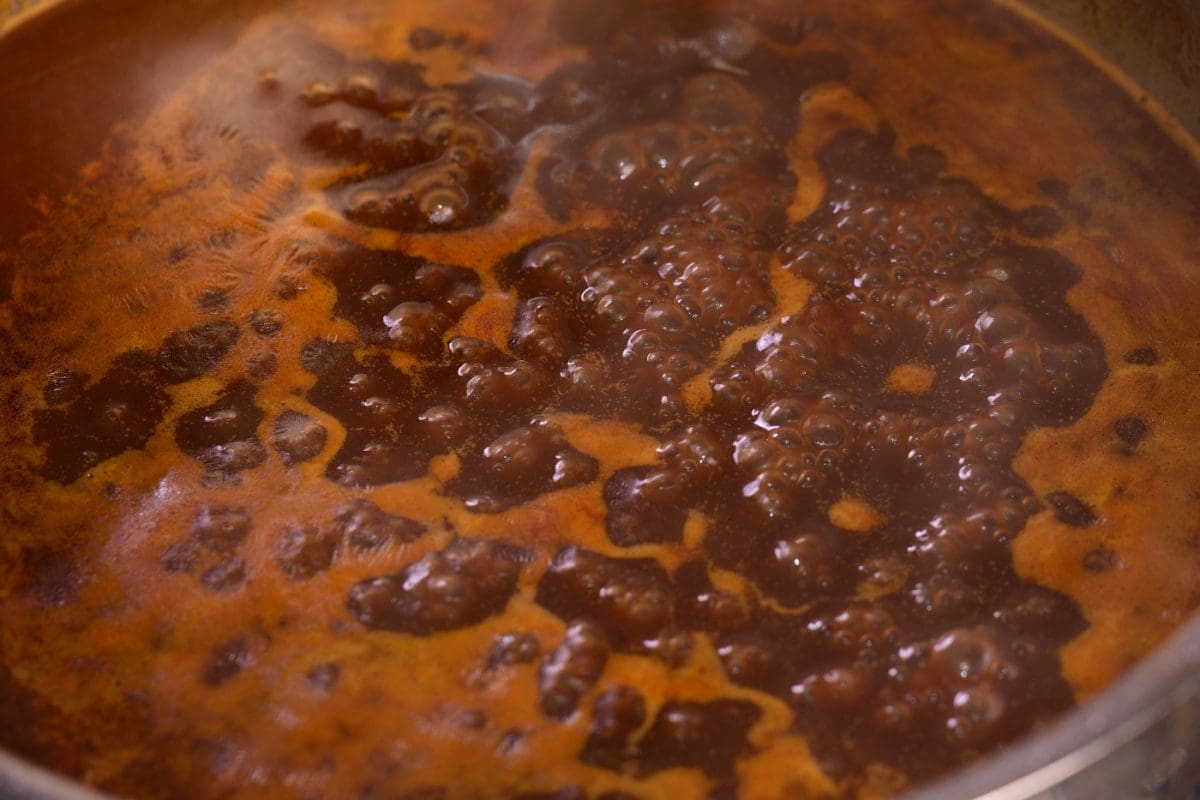One can hardly blame restaurant owners for replacing temperamental, high-priced sauciers with cheap, idiot-proof powders and pastes that need only be reconstituted with a little water. This is a decision driven by simple economics rather than preference. There are still a few of us who stubbornly cling to methodologies that were practically beaten into us long ago, even if they have no value in the modern market.
Note: Even though this sauce can be made without killing any animals, some meat trimmings greatly improve the flavor and body of this sauce–they are part of the classic recipes. Simply brown them thoroughly as the first step before adding the vegetables to the pan. For this amount approximately 1 lb./450 grams of lean trimmings is sufficient. If you want to use bones, simply roast them for 1 hour at 350 F/176 C and add them to the stock after you have added the water. Allow at least an extra 2 hours to extract the flavor from the bones. If you have drippings left over from browning land or air dwelling proteins, use that pan to brown the root vegetables, etc.
Cut the carrots and celery into 1″/3 cm pieces. Heat a skillet to 250 F/121 C, add 0.5 cups/120 ml vegetable oil (or lard, or duck fat, etc.) and add the vegetables. Listen for sizzling. A hissing sound means the pan is too cold. A popping sound means the pan is too hot.

Avoid stirring unnecessarily, so as not to cool the surface of the pan.
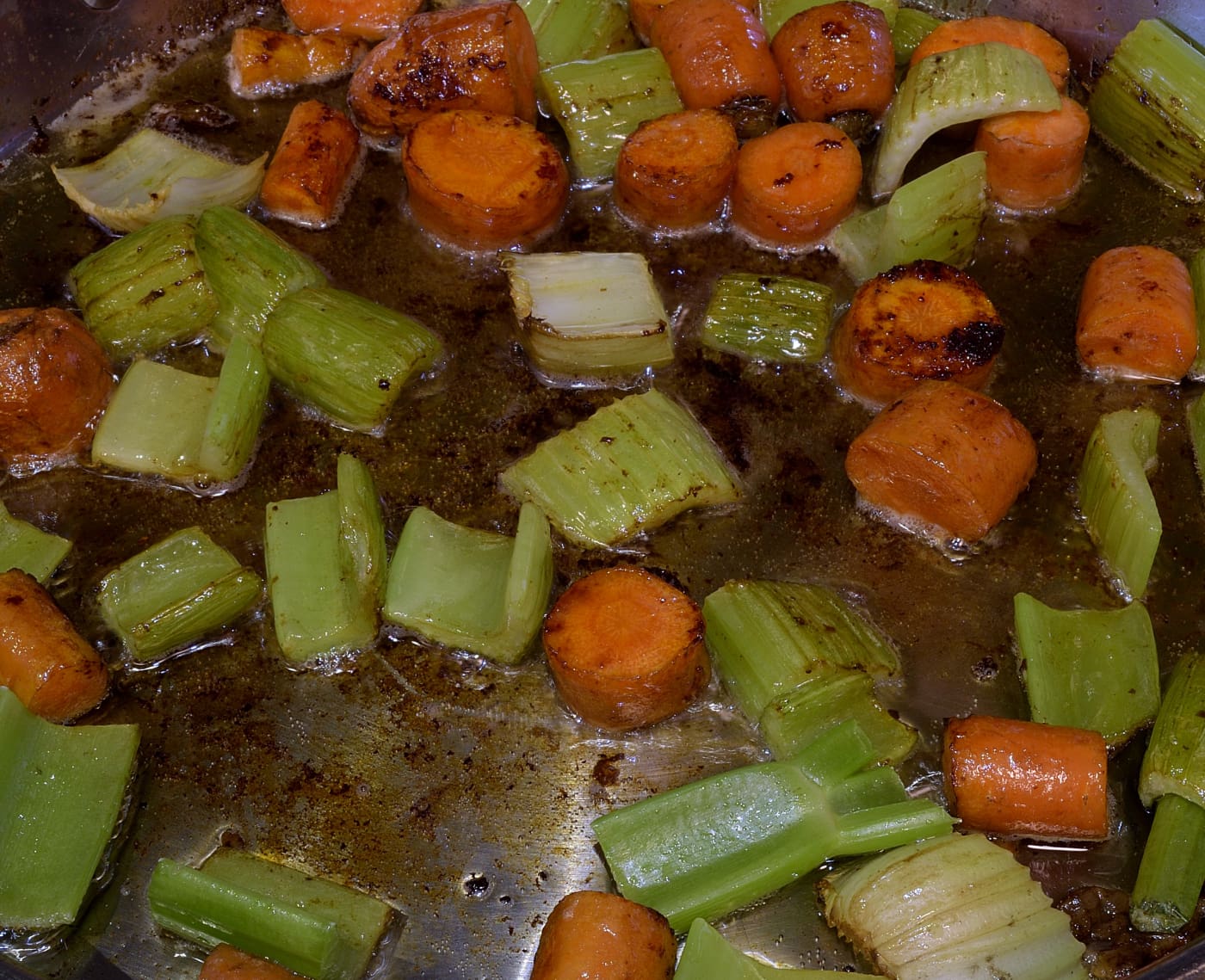
Caramelize the vegetables as pictured. I use an infrared thermometer to monitor the heat of the pan–as close to 250 F/121 C as possible.
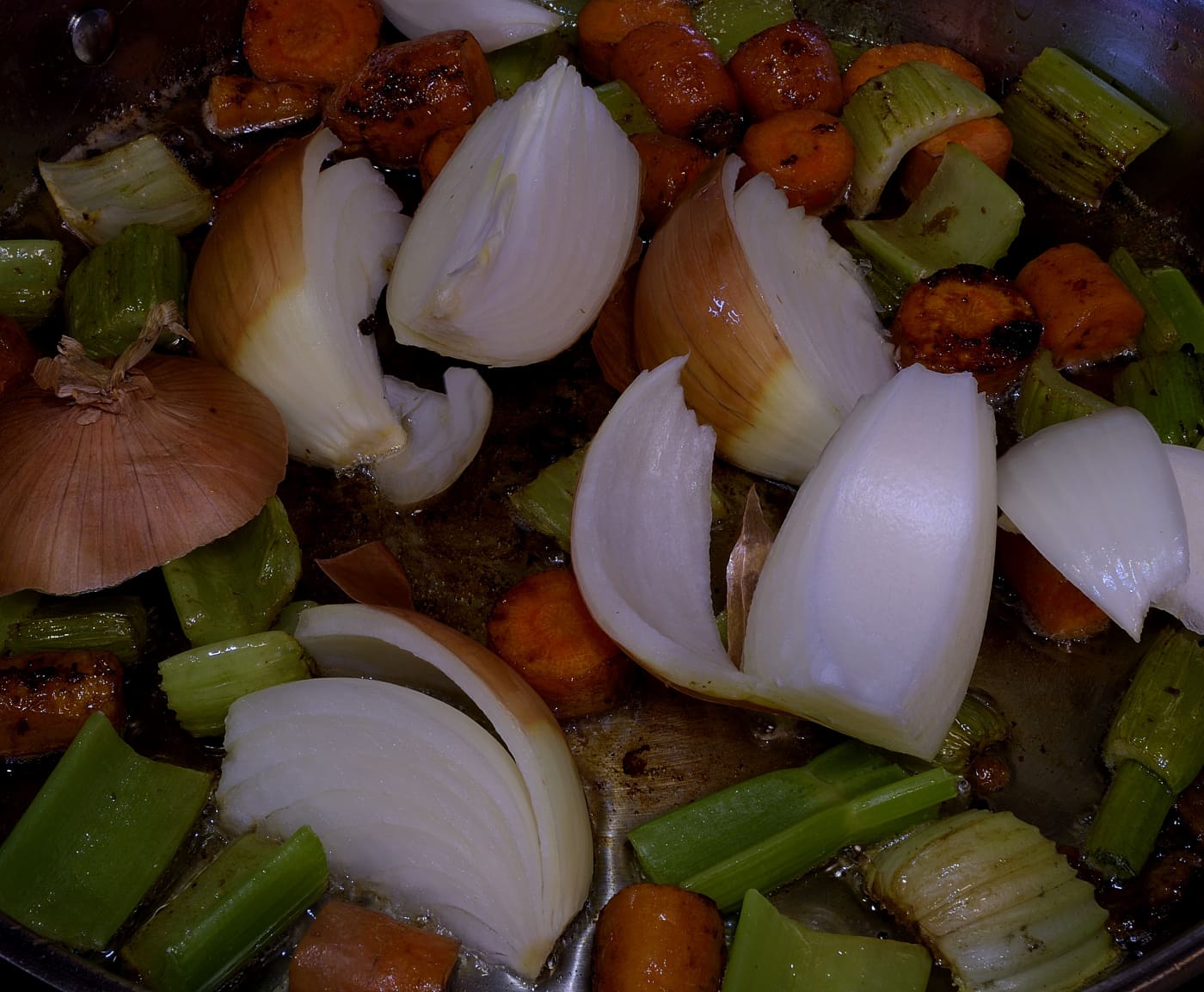
Add the onions and continue browning–onions brown much faster than carrots and celery.
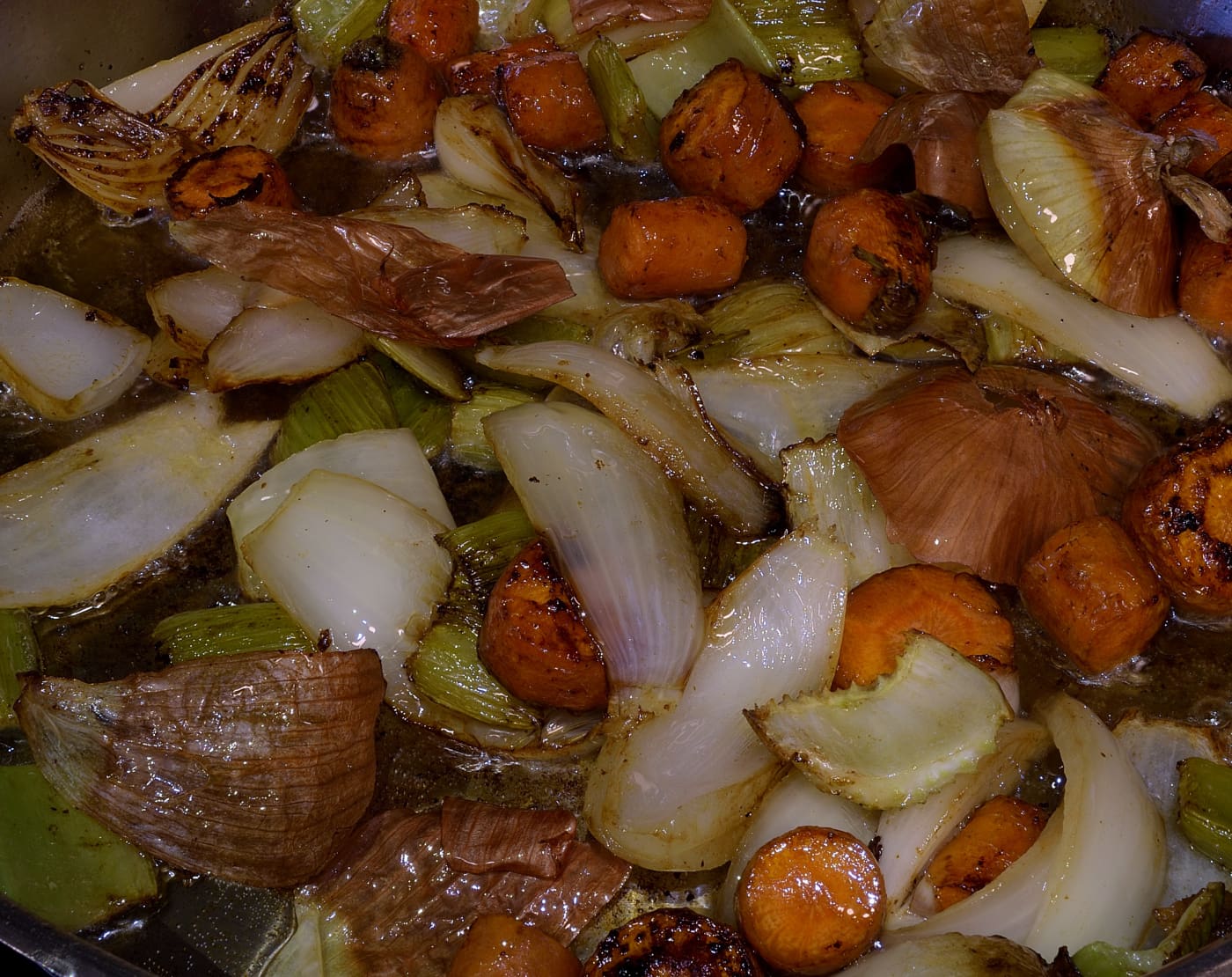
Continue browning until the vegetables are fully rendered–cooked through.
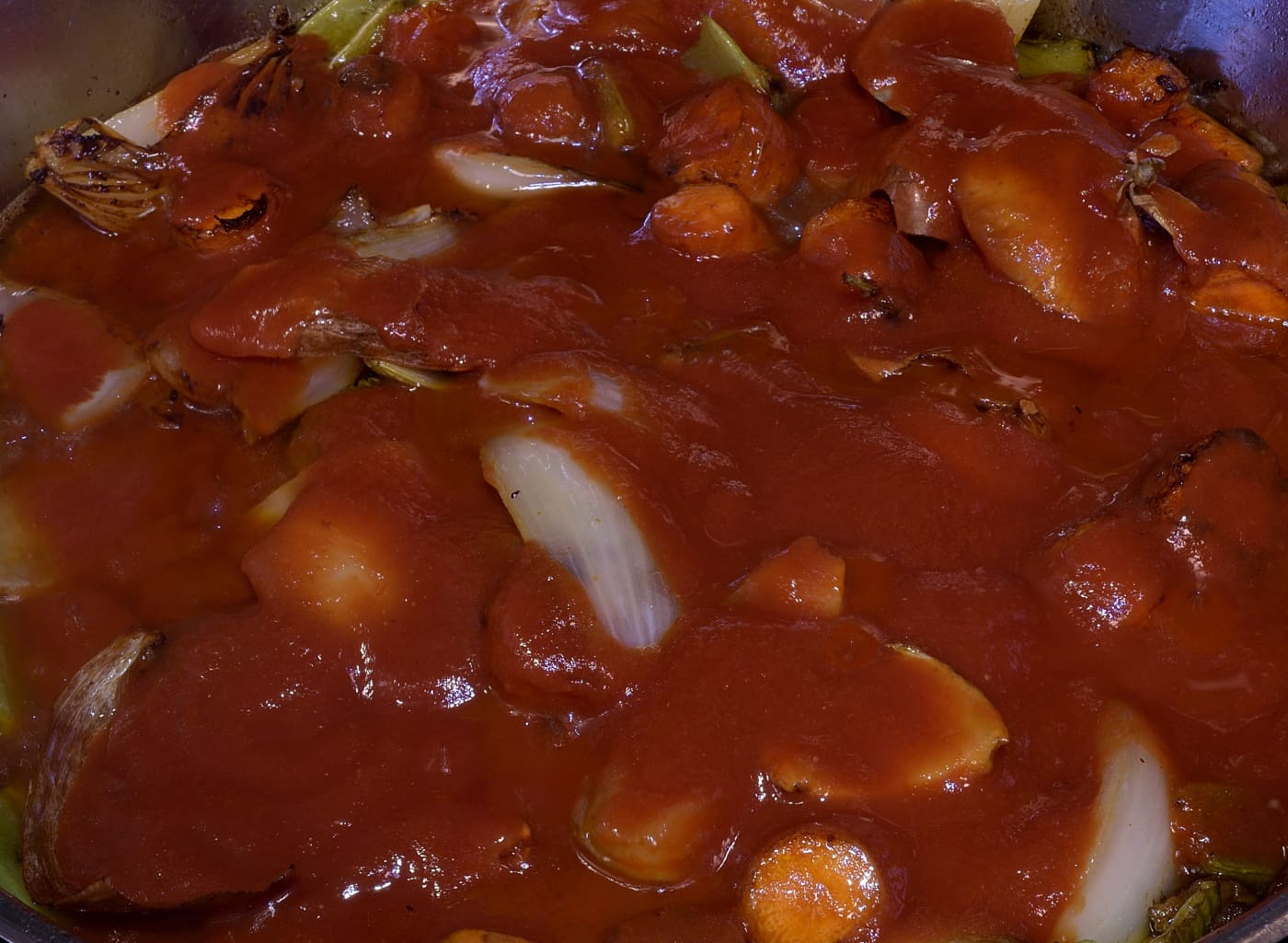
Add the tomato sauce.

Stir to coat the vegetables.
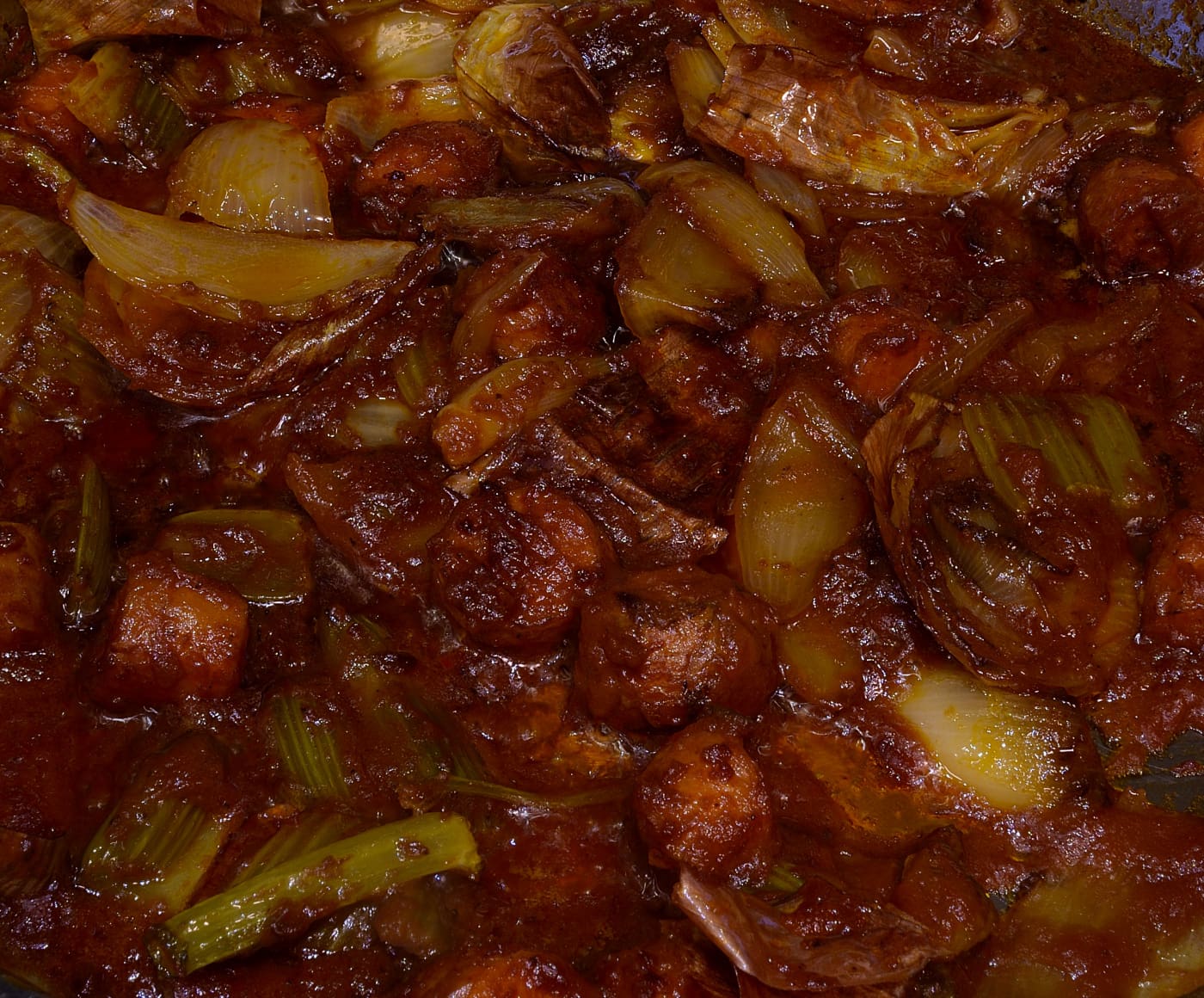
Continue browning–this step is crucial to creating a brown sauce as opposed to a red sauce.
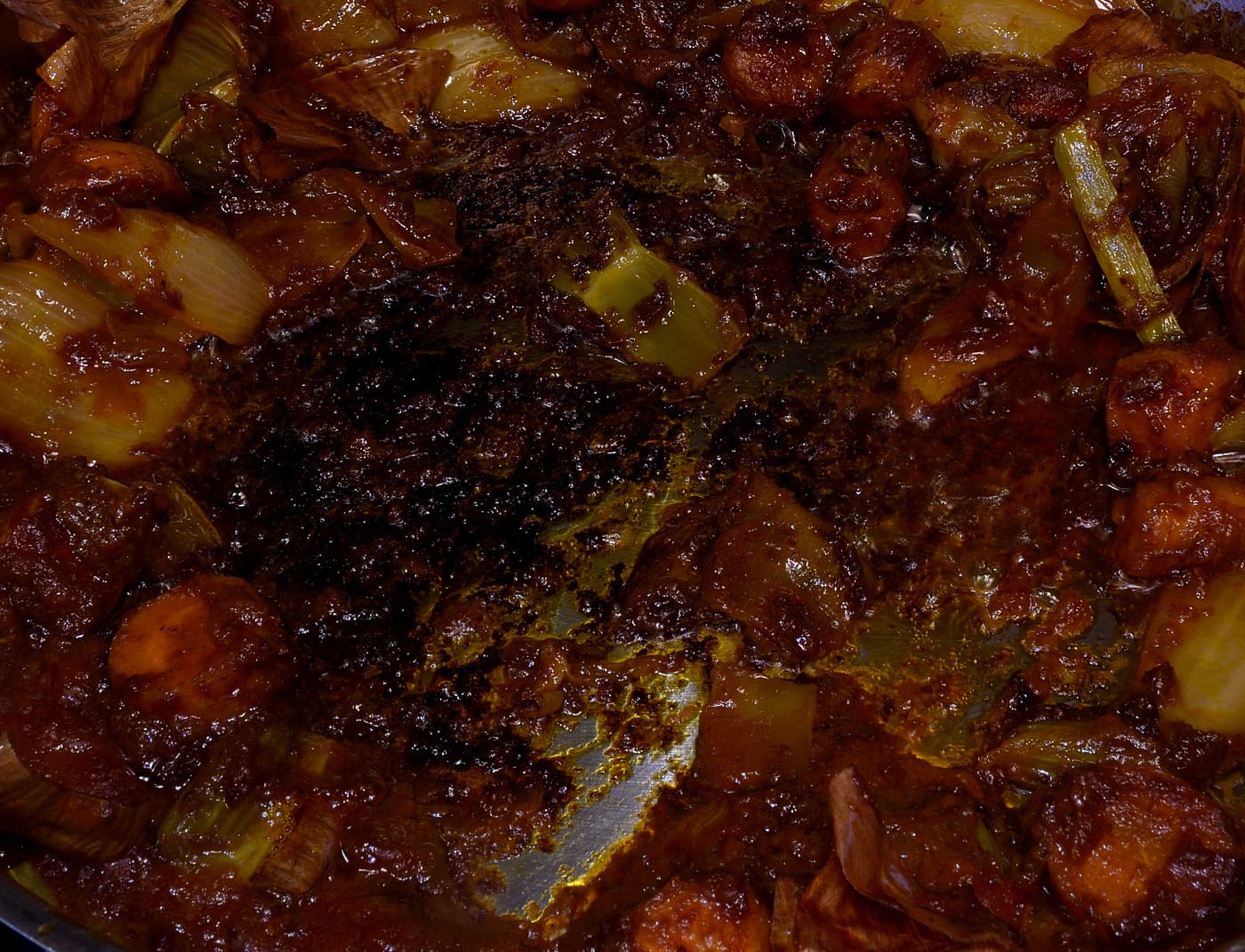
Continue frying this mixture (sofrito) until a brown crust forms on the bottom of the pan.
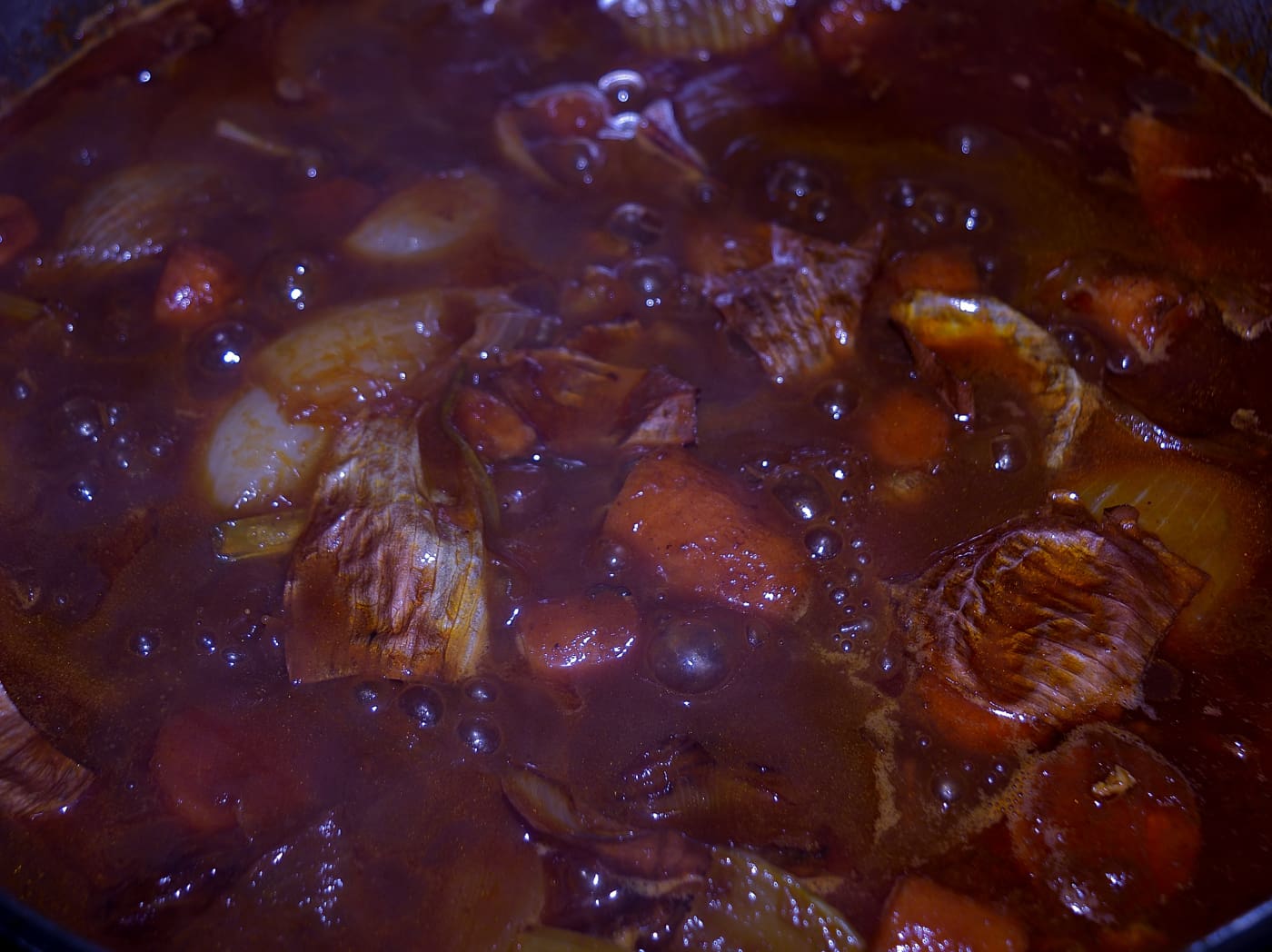
Add the red wine.
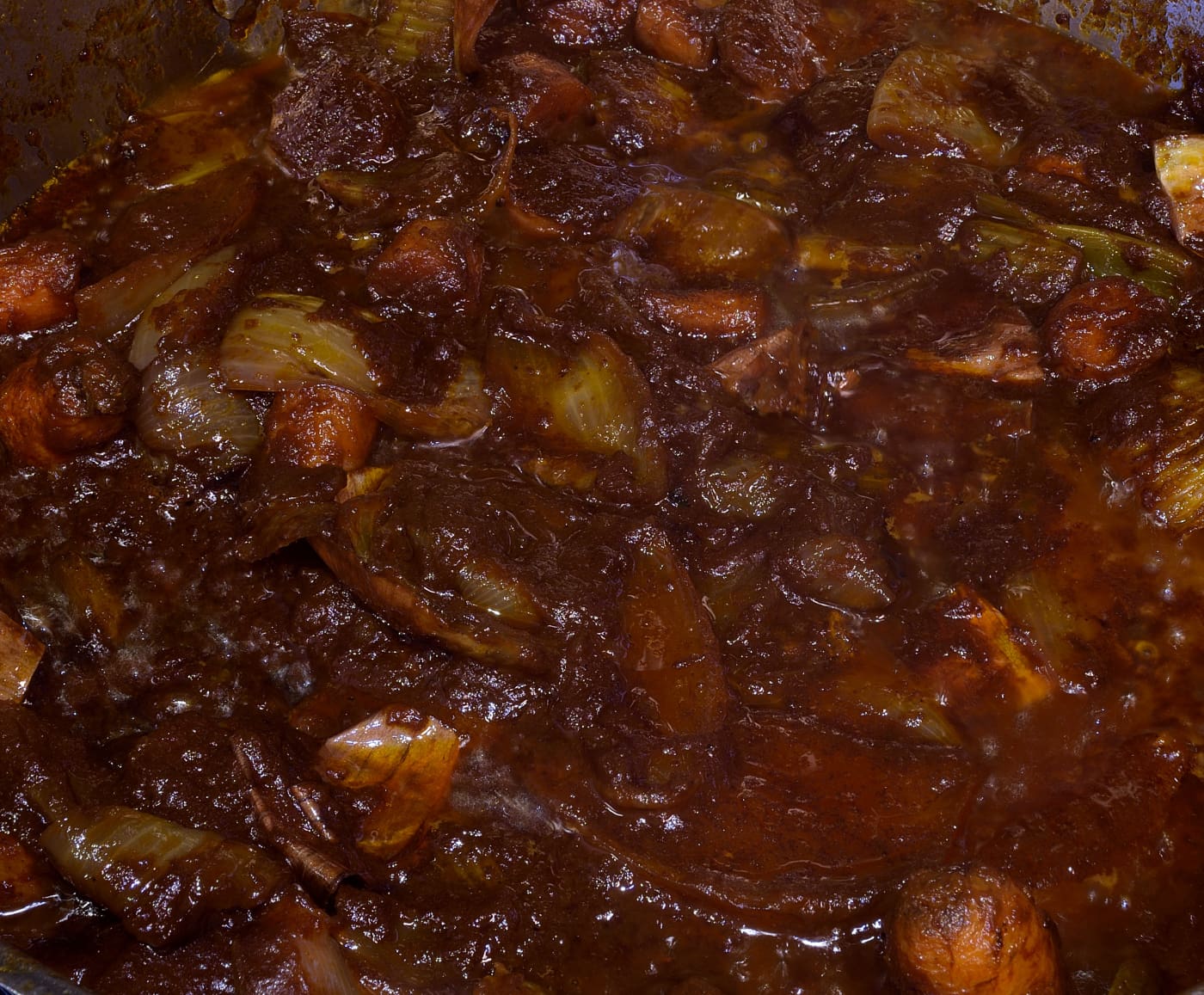
Reduce the wine completely–failure to do so can result in a purple sauce instead of a brown sauce. The contents should be very thick and sticky. Wine provides flavor to sauces like this–but NOT volume. Wine in sauces should always be reduced to as little as possible before creating the actual sauce.

Add 2 quarts/2 liters of water to the pan.
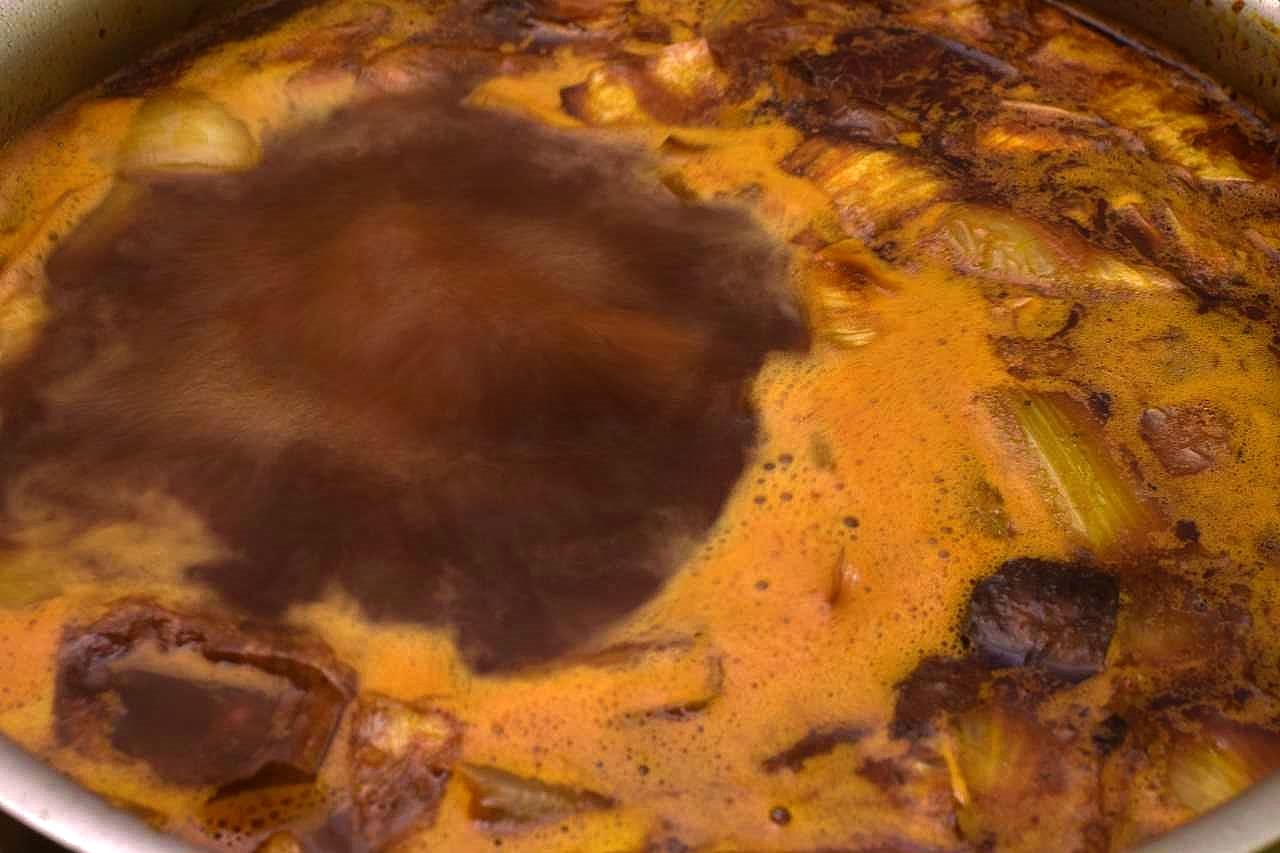
Bring to a boil.

Simmer for at least two hours to fully dissolve the caramelized vegetables.
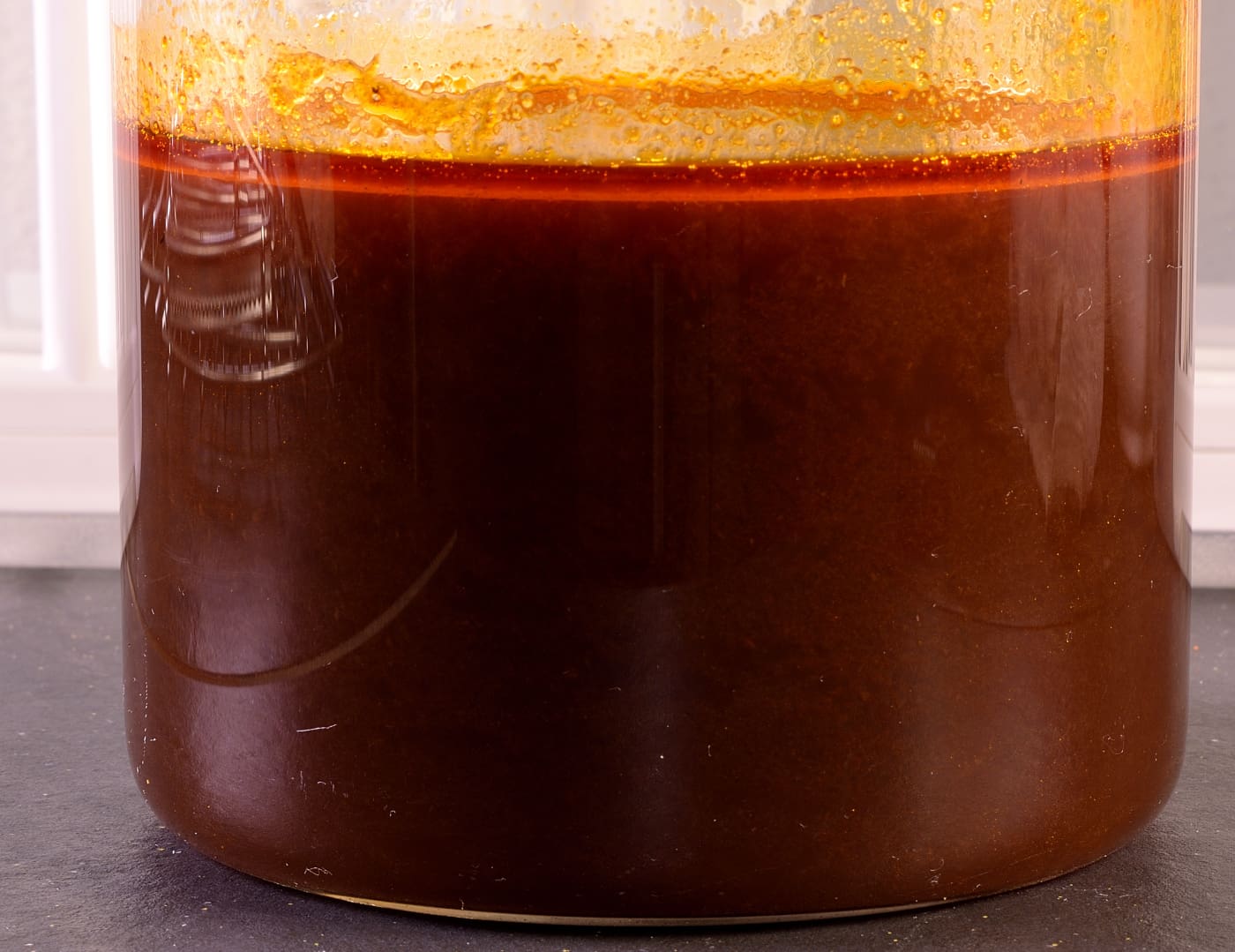
Strain out the vegetables and pour the stock into the an appropriate container. Allow to cool on the counter for up to one half hour, approximately 70 F/21. Cover and store in the refrigerator. After cooling, the layer of fat on the top can be easily removed. Further reduction will intensify the flavor, giving you a flavorful, concentrated brown stock.
